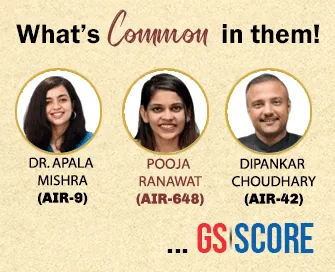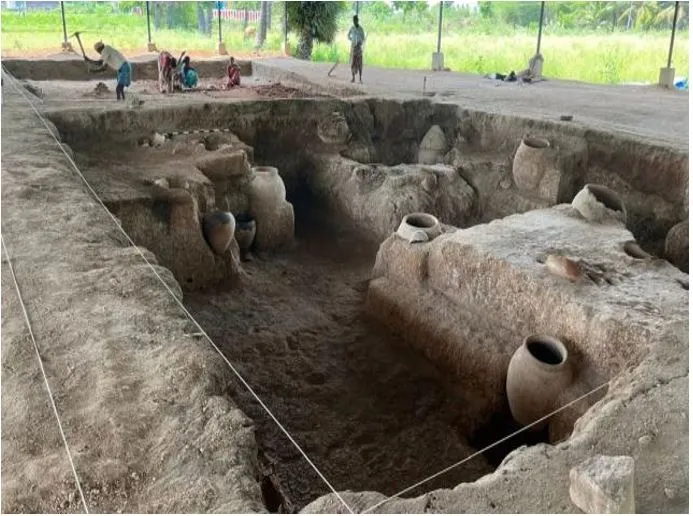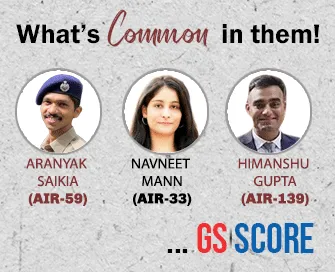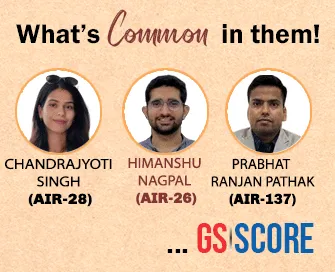

26th May 2025 (13 Topics)
Mains Issues
Context
Maldivian Foreign Minister Abdulla Khaleel is on a three-day official visit to India. During the visit, he will participate in the Second High-Level Core Group (HLCG) meeting with Indian External Affairs Minister Dr. S. Jaishankar to review the progress of the India–Maldives Comprehensive Economic and Maritime Security Partnership, which was launched during Maldivian President Mohamed Muizzu’s visit to India.
Strategic Significance of India–Maldives Relations
- Geostrategic Location of Maldives: Situated in the Indian Ocean, Maldives lies along vital Sea Lanes of Communication (SLOCs), making it crucial for India's maritime security and trade connectivity.
- ‘Neighbourhood First’ and SAGAR Policy: India considers Maldives an essential partner under its Neighbourhood First policy and the Vision SAGAR (Security and Growth for All in the Region), which seeks cooperative maritime governance.
- MAHASAGAR Initiative: The India–Maldives vision document aligns with India’s newer maritime doctrine MAHASAGAR (Mutual and Holistic Advancement for Security and Growth Across Regions)—an advanced articulation of regional maritime cooperation.
Recent Political and Diplomatic Tensions
- Leadership Change in Maldives (2023): President Mohamed Muizzu—seen as having a pro-China orientation—demanded the withdrawal of Indian military personnel, straining bilateral ties.
- Reset in Relations: However, during his October 2023 visit to India, Muizzu signaled intent to repair and strengthen ties, and the adoption of the vision document marked a diplomatic reset.
- High-Level Engagements: Khaleel's third visit to India in 2024 reflects continuity in political dialogue and willingness for institutionalised strategic partnership despite past tensions.
Key Dimensions of the India–Maldives Comprehensive Partnership:
- Economic Cooperation: Focus on developmental assistance, infrastructure, and tourism, with India extending lines of credit and grant assistance for major projects including airports, roads, and water sanitation.
- Maritime Security Cooperation: Joint naval exercises, coast guard training, hydrography cooperation, and maritime domain awareness initiatives are part of India’s capacity-building efforts.
- Implementation Mechanism – HLCG: The High-Level Core Group mechanism monitors implementation, ensures accountability, and facilitates coordinated execution of bilateral projects.
Significance of the Partnership:
- The India–Maldives maritime and economic partnership reinforces India's strategic presence in the Indian Ocean amidst China’s expanding footprint (e.g., under the Belt and Road Initiative).
- It enables India to promote rules-based maritime order, counter piracy, trafficking, and illegal fishing, and maintain peace and stability in the IOR (Indian Ocean Region).
Challenges:
- China’s Influence: Maldives continues to engage with China economically, and any power imbalance may impact Indian interests.
- Domestic Political Factors: Political rhetoric in the Maldives may be used to mobilize nationalist sentiments against India.
- Security Perception: Withdrawal of Indian military presence may limit real-time strategic response capabilities in the region.
Way Forward:
- Maintain high-level diplomatic channels to reinforce trust and institutional partnerships.
- Ensure timely and transparent implementation of ongoing projects to build public support.
- Enhance people-to-people exchanges through education, tourism, and health diplomacy.
- Leverage multilateral platforms like IORA and Colombo Security Conclave to sustain multilateral regional cooperation.
PYQ:Q. Discuss the political developments in the Maldives in the last two years. Should they be of any cause for concern to India? (2013) |


Mains Issues
Context
The U.S. Defence Intelligence Agency’s Worldwide Threat Assessment Report 2025 has outlined how India perceives its key security concerns, placing China as its “primary adversary” and Pakistan as a secondary but persistent threat. The report sheds light on India’s military posture, ongoing defense modernization, global strategic partnerships, and nuclear capabilities.
India’s Security Perception and Defence Focus
- China as the Primary Adversary: The report notes that India views China as its foremost military and strategic challenge, particularly in the Indo-Pacific and the Himalayan border regions.
- Pakistan as a Managed Threat: Despite incidents like Operation Sindoor in April 2024, Pakistan is considered an ancillary threat. India focuses on deterrence and management, especially due to cross-border terrorism.
- Leadership and Modernisation Goals: PM Modi’s priorities are centered around asserting India’s global leadership, enhancing regional influence, and accelerating military modernisation under the Atmanirbhar Bharat and Make in India
Defence Modernisation and Nuclear Capabilities
- Missile Development: India conducted tests of Agni-I Prime (MRBM) and Agni-V MIRV, reflecting progress in nuclear deterrence and second-strike capabilities.
- Nuclear Triad Strengthening: India commissioned its second nuclear-powered submarine, boosting its sea-based deterrence capability and fulfilling nuclear triad aspirations.
- Indigenous Defence Capability: Continued emphasis on building a self-reliant defense ecosystem, reducing reliance on foreign procurement—especially from Russia—and focusing on supply chain resilience.
Geopolitical Engagements and Strategic Diplomacy
- India-China Border Dynamics: The October 2024 disengagement agreement at Depsang and Demchok reduced tensions post-Galwan (2020), but the LAC demarcation issue remains unresolved.
- India–Russia Relations: Despite the global shift, India maintains ties with Russia for economic cooperation and military logistics, while being cautious of growing Sino-Russian alignment.
- Strategic Multilateralism: India is deepening engagement through Quad, BRICS, SCO, and ASEAN, aiming to assert influence in the Indo-Pacific and counterbalance China.
Way Forward
India needs to:
- Resolve legacy border disputes, particularly with China and Pakistan, to avoid prolonged military standoffs.
- Continue investing in indigenous defense technologies to mitigate future geopolitical shocks.
- Ensure that its strategic diplomacy balances major power relations without jeopardizing its autonomy.
- Collaborate more deeply on cyber, space, and AI-driven warfare domains to stay future-ready.
PYQ:“The China-Pakistan Economic Corridor (CPEC) is viewed as a cardinal subset of China's larger OBOR (One Belt One Road) initiative. Give a brief description of CPEC and outline the reasons why India considers it a threat to its sovereignty and territorial integrity.” (2017) |


Mains Issues
Context
On April 17, 2024, the Tamil Nadu Cabinet, chaired by Chief Minister M.K. Stalin, approved the Space Industrial Policy 2024. With this, Tamil Nadu became the third Indian state—after Karnataka and Gujarat—to roll out a state-specific space sector policy aimed at facilitating private sector participation and enhancing space-based economic development.
Significance of Tamil Nadu’s Space Policy in India’s Decentralized Space Governance
Background and Context
- The Indian Space Policy 2023, introduced by the Union Government, provides a national-level framework to liberalize the space economy by enabling private participation.
- States are now formulating complementary policies to align with national goals and tap into localized strengths.
Tamil Nadu’s Strategic Position in Space Ecosystem
- Existing ISRO Infrastructure:
- ISRO Propulsion Complex (IPRC), Mahendragiri (Tirunelveli): Specializes in earth-storable and cryogenic engines for launch vehicles.
- Kulasekarapattinam Spaceport (Thoothukudi): India’s second spaceport under development to facilitate launches of small satellites.
- Space Startups and R&D Ecosystem:
- Emergence of startups working on cutting-edge technologies like reusable launch vehicles, in-space manufacturing, and satellite data analytics.
- Space Technology Incubation Centre (STIC) at NIT Tiruchirappalli, supporting ISRO-aligned innovations.
Trigger for the Policy:
- Recommendation by IN-SPACe (Indian National Space Promotion and Authorisation Centre), a central body under the Department of Space, to formulate a regional policy.
- Tamil Nadu’s existing Aerospace and Defence Industrial Policy (2021) had already identified the space sector as a priority.
- The state has over 250 ISRO vendors, forming a strong industrial base.
Key Objectives and Targets of the Policy
- Investment Target: ?10,000 crore over the next five years.
- Employment Generation: Estimated 10,000 direct and indirect jobs.
- Industrial Development:
- Support for R&D and global capability centres.
- Creation of Space Bays—designated zones offering tailored incentives for firms investing below ?300 crore.
- Support for space industrial park developers with housing subsidies (10% capped at ?10 crore).
- 25% capital subsidy (capped at ?5 crore) for green/sustainable initiatives.
Policy-Driven Governance Integration
- Emphasis on deploying space technologies for improving public services and governance in areas like:
- Disaster management
- Fisheries and agriculture
- Urban planning and municipal administration
- Transport, revenue, and healthcare delivery
Strategic Relevance:
- Tamil Nadu’s policy aligns with India’s transition from a government-monopolized space domain to a multi-stakeholder ecosystem.
- Decentralized space governance helps exploit state-specific comparative advantages (e.g., skilled workforce, vendor base, geographical access to sea for launches).
Industrial and Technological Implications
- Boosts indigenous capabilities in high-tech manufacturing, satellite component fabrication, and propulsion systems.
- Encourages integration of Tier-2/3 suppliers into global value chains via public-private collaboration.
Governance and Public Services
- The integration of space applications for real-time monitoring, planning, and decision-making augments data-driven governance at the state level.
Major Developments in India’s Space SectorAdvancements in Space Science Missions
|
PYQ:Discuss India’s achievements in the field of Space Science and Technology. How the application of this technology has helped India in its socio-economic development? (2016) |


Mains Issues
Context
The 48-hour bandh enforced by the Meitei organisation Coordinating Committee on Manipur Integrity (COCOMI) in May 2025 brought normal life to a standstill in Manipur's Imphal Valley. The bandh was called to protest the alleged covering of the state’s name "Manipur" from a government bus, reportedly by Central security personnel. The incident triggered a widespread emotional and political response, reflecting deeper tensions tied to ethnic identity, federal relations, and state governance.
Key Issues Emerging from the Incident:
- Identity Politics and Symbolism
- The removal of the word "Manipur" was perceived as a symbolic erasure of the state's historical and cultural identity.
- Civil resistance, including the re-pasting of "Manipur/Kangleipak" on vehicles, shows the role of symbolic representation in ethnic mobilisation.
- This reflects growing assertiveness of regional identities in the face of perceived central neglect or interference.
- Ethnic Fragility and Social Polarisation
- The bandh occurred against the backdrop of ongoing ethnic tensions between the Meitei and Kuki-Zo communities since 2023.
- Such incidents have the potential to reignite latent ethnic grievances and further deepen fault lines.
- Women protestors and local groups enforcing shutdowns illustrate grassroots involvement in identity mobilisation.
- Crisis of Governance under President’s Rule
- The state is currently under President’s Rule (since Feb 2025) following the resignation of former CM N. Biren Singh amid ethnic violence.
- Absence of elected government has weakened institutional legitimacy and public trust in law enforcement and administration.
- The demand for resignation of key administrative and police officials indicates public dissatisfaction with bureaucratic accountability mechanisms.
- Civil Society's Expanding Role
- COCOMI has emerged as a powerful voice for Meitei interests, often engaging in mobilisation, pressuring the administration, and defining public narratives.
- The bandh illustrates the evolving role of civil society as a counterbalance to state authority in conflict-ridden regions.
Governance and Administrative Implications:
- Central-State Relations
- The intervention of Central security forces in a sensitive ethnic region without contextual sensitivity can undermine cooperative federalism.
- It raises questions about command hierarchy, civil-military coordination, and respect for state symbols under Central Rule.
- Rule of Law vs. Popular Sentiment
- The bandh, while peaceful in parts, led to restrictions on vehicular movement, closure of essential services, and disruption of public life.
- This reflects a classic governance dilemma between maintaining public order and accommodating popular sentiment in ethnically sensitive areas.
- Administrative Accountability
- The government’s formation of a two-member inquiry committee shows procedural responsiveness.
- However, it also highlights the fragile trust between the state machinery and its people, especially when security forces are seen as actors of symbolic violence.
Strategic and Policy-Level Concerns
- Internal Security
- Ethnic mobilisation over symbolic issues can escalate into broader conflict in already volatile environments.
- Ensuring sensitivity among security forces and public officials in multi-ethnic zones is critical for peace maintenance.
- Importance of Communication and Transparency
- The delay or failure in clarifying the incident by authorities further inflamed tensions.
- It underscores the need for proactive public communication strategies, particularly when managing inter-community relations.
- Role of Festivals in Peacebuilding
- The Shirui Lily Festival, held after a two-year gap, could have served as an opportunity for cultural reconciliation.
- However, the controversy surrounding it reflects how even neutral cultural spaces are politicised amid unresolved ethnic issues.
Way Forward
- Prompt and Transparent Inquiry:
- Expedite and publish the findings of the inquiry committee in a transparent manner.
- Fix responsibility where due, particularly if the action was taken without authority or in breach of protocol.
- Rebuilding Public Trust
- Re-establish communication with civil society groups like COCOMI through structured dialogue platforms.
- Reinforce the cultural pride of all ethnic groups through inclusive state narratives and public campaigns.
- Administrative Sensitisation
- Mandate ethno-cultural sensitisation training for security forces and bureaucrats deployed in Manipur and similar regions.
- Institutionalise grievance redressal mechanisms involving local community stakeholders.
- Restoring Democratic Processes
- Expedite the restoration of an elected government in Manipur to rebuild institutional trust and legitimacy.
- Encourage multi-community forums for joint decision-making, particularly on issues involving public symbolism and representation.
PYQQ. Ethnic conflicts in North-East India pose a serious challenge to the internal security of the country.” Discuss with reference to recent developments. (2020) |


Prelims Articles
Context
Amarnath Ramakrishna, the lead archaeologist of the Keeladi excavations, has declined the ASI’s 2025 request to revise his 2023 final report. The ASI had questioned the proposed early dating of the site (8th–5th century BCE), seeking corrections and reassessment. Ramakrishna defended the original findings, citing established stratigraphy, AMS dating, and procedural integrity.
Keeladi Excavation – Archaeological Significance:
- Location: Keeladi (also spelled Keezhadi), near Sivaganga district, Tamil Nadu.
- Associated Culture: Sangam Age urban settlement; potential continuity with Iron Age civilization of South India.
- Major Findings:
- Over 13,000 artefacts including pottery, graffiti, inscriptions, iron tools, spindle whorls, and ornaments.
- AMS (Accelerator Mass Spectrometry) dating from carbon samples indicating habitation as early as 8th century BCE.
- Evidence of urban planning, literacy, and industrial activity (e.g., weaving and bead-making).

Chronological Contention:
- Excavator’s claim: Keeladi's cultural layers date back to 8th–5th century BCE, based on:
- Stratigraphy, material culture, and AMS dating.
- ASI’s objection (2025): Suggested a conservative dating of pre-300 BCE; raised concerns about nomenclature and periodization.
Institutional Dispute:
- Archaeologist's stance: Defended report's integrity, methodology, and chronology; offered to rectify only minor omissions (e.g., missing layer numbers).
- ASI's demand: Sought a re-examination and corrections citing expert feedback, triggering concern among independent historians about potential political dilution of early Tamil urban history.
|
Q. With reference to the difference between the culture of Rigvedic Aryans and Indus Valley people, which of the following statements is/are correct? (2017)
Select the correct answer using the code given below:
|


Prelims Articles
Context
On May 26, 2025, Karnataka Legislative Assembly Speaker U.T. Khader revoked the six-month suspension of 18 BJP MLAs, originally penalized on March 21 for disorderly conduct in the House. The revocation followed expressions of remorse by the legislators and political consultations among ruling and opposition leaders.
Power of the Speaker in State Legislatures:
- Under Article 212 of the Indian Constitution, courts cannot inquire into the validity of proceedings in the legislature.
- The Speaker derives powers to maintain decorum and order in the House under Rules of Procedure and Conduct of Business of the respective State Assembly.
- The suspension of members is within the Speaker’s powers to ensure orderly functioning of the legislature.
Legal Precedents and Constitutional Position:
- Supreme Court Ruling in Raja Rampal Case (2007): The Court upheld that legislatures have the power to expel or suspend members, but such actions must adhere to the principle of proportionality and procedural fairness.
- In Lok Prahari v. Union of India (2018), it was affirmed that the Speaker's decisions must align with the rule of law and constitutional morality.
Duration of Suspension – Legal Limitations:
- SC Judgment (2022) in Shiv Sena MLAs suspension case (Maharashtra): The suspension of MLAs for more than one session was deemed unconstitutional. This judgment stressed that long-term suspensions impair representation of constituencies and violate the principle of representative democracy.
Legislative Conduct and Privileges:
- Legislators are expected to uphold the dignity of the House.
- Under Article 194, State Legislatures have powers and privileges similar to Parliament, but these are subject to constitutional provisions.
Role of Apology and Political Mediation:
- The revocation following expressions of regret and inter-party dialogue illustrates the quasi-judicial and reconciliatory role of the Speaker.
- It highlights how political consensus and procedural decorum influence the functioning of a parliamentary democracy at the state level.
Related Institutions:
- Governor's Role: Though not directly involved in legislative suspensions, the Governor may play an informal role through advisory influence.
- Law Minister's Consultation: Reflects executive-legislative interface in resolving procedural deadlocks.
|
Q. Consider the following statements: (2019)
Which of the statements given above is/are correct?
|


Prelims Articles
Context
On May 21, 2025, the Ministry of Railways issued a directive to all 17 railway zones instructing them to ensure proactive communication with employees regarding the available options under the Unified Pension Scheme (UPS). The ministry emphasized the need for facilitation camps to assist employees in decision-making and registration.
Background on Pension Reforms in India:
- Old Pension Scheme (OPS): A defined benefit system where the pension amount is fixed and based on last drawn salary.
- New Pension Scheme (NPS): Introduced from January 1, 2004, it is a defined contribution system managed by PFRDA (Pension Fund Regulatory and Development Authority).
- Unified Pension Scheme (UPS): A recent initiative aimed at providing a harmonized pension framework to cover employees under a single, transparent, and accountable mechanism.
Relevance to Central Government Employees:
- The Railway Ministry employs over 12 lakh personnel, many of whom are covered under NPS.
- The UPS seeks to unify choices and streamline pension management for both pre- and post-2004 recruits, depending on eligibility and service rules.
- The move follows increasing employee demands and judicial scrutiny concerning the shift from OPS to NPS.
Governance and Institutional Mechanisms:
- PFRDA Act, 2013 governs NPS and related pension systems.
- UPS may act under the supervision or parallel framework subject to future Cabinet decisions or legislative backing.
- Use of digital registration and facilitation aligns with the Government of India’s Digital India objectives.
Unified Pension Scheme (UPS)
Key Features of UPS
Contributions under the UPS
|
PYQ:Q. With reference to the National Pension System (NPS), consider the following statements: (2017)
Which of the statements given above are correct?
|


Prelims Articles
Context
India is poised to become the first nation to operationalize a fully indigenous high-resolution global weather forecasting system—Bharat Forecast System (BFS)—developed by IITM, Pune. Operating at a 6-km resolution, BFS enhances prediction accuracy for cyclones, extreme rainfall, and localized disasters, surpassing the existing 12-km model. The system will be formally launched on May 26, 2025.
Bharat Forecast System (BFS):
- It is developed by Indian Institute of Tropical Meteorology (IITM), Pune.
- It operates at a 6-kilometre resolution globally (particularly across the tropical belt: 30°N to 30°S).
- It is known also as the High-Resolution Global Forecast Model (HGFM).
- It marks India’s self-reliance in numerical weather prediction, with no foreign dependency.
- It will replace the current 12-km GFS model used by India.
Features and Benefits:
- It enhances prediction of cyclone tracks, landfall intensity, extreme rainfall, and weather extremes.
- It is capable of providing sub-block level forecasts, which are useful for localised disaster response.
- It open-access system—freely available to researchers and global meteorological institutions.
- It is built using scientific capacity entirely within India, with informal collaboration with ECMWF.
Institutional Involvement:
- It is developed by IITM, under the Ministry of Earth Sciences (MoES).
- It is supported by India Meteorological Department (IMD) for integration into operational forecasting.


Prelims Articles
Context
The Securities and Exchange Board of India (SEBI) has proposed significant changes to India’s short-selling framework, including allowing short-selling for all stocks (except those in the trade-to-trade segment), eliminating mandatory disclosure requirements, and modifying enforcement norms related to settlement failures. These reforms aim to deepen market liquidity and align India’s regulatory practices with global standards.
Short Selling:
Short selling is a trading strategy where an investor borrows a stock, sells it on the market, and buys it back later at a lower price to return it, profiting from the price decline. It’s a mechanism for price discovery and allows hedging and speculation.
Current Framework in India (as per SEBI rules):
- It is allowed only in stocks listed in the Futures and Options (F&O)
- Naked short selling (without borrowing shares) is prohibited.
- Institutional investors must disclose short sales upfront.
- Retail investors must disclose by end of the trading day.
- The settlement failures result in penalties (0.05% of the shortage value).
- Exchanges publish weekly short-sale data scrip-wise.
Key Proposed Changes by SEBI (2025 Draft Proposal):
- Wider Scope: Allow short-selling in all stocks except T2T (Trade-to-Trade) segment stocks, expanding the universe for short-sale strategies.
- Relaxation of Disclosure Norms:
- Eliminate mandatory disclosures of short sales by both institutional and retail investors.
- Settlement Enforcement Changes:
- Stock exchanges will no longer need to enforce delivery failure penalties once direct payout mechanisms to investors are fully implemented.
- Non-Short-Sale Clarification:
- Securities purchased in earlier settlements but pending delivery in demat will not be treated as short sales.
Fact Box:
|
PYQ:In the context of Indian economy, non-financial debt includes which of the following? (2020)
Select the correct answer using the code given below:
|


Prelims Articles
Context
At the 2025 Google I/O Developer Conference, Google introduced a “Matryoshka” AI strategy that integrates foundational AI models into all its platforms and services. While it marks a major technological shift towards autonomous digital systems, it has raised serious concerns regarding user privacy, data usage, and intellectual property rights.
Technological Dimension:
- Google has centered its entire ecosystem on AI foundational models (like Gemini), transforming conventional applications (e.g., Search, Gmail, Google Docs) into AI-powered tools.
- This marks a transition from tool-based interfaces to AI agents that anticipate, respond to, and act on user needs.
- The concept of a "Matryoshka AI" refers to a central intelligence model surrounded by successively intelligent product layers.
- AI is now being deeply embedded not just in end-user products but also in developer platforms and cloud infrastructures.
Governance & Regulatory Concerns:
- Growing global debate on data privacy, surveillance capitalism, and the ethical usage of user data in training large language models (LLMs).
- Copyrighted data and intellectual property rights issues as AI systems are trained on vast internet corpora without explicit consent mechanisms.
- Concerns raised about AI model transparency, accountability, and bias.
Cybersecurity and Digital Ethics:
- A key concern involves data governance, especially in jurisdictions with GDPR-like frameworks, and India’s own Digital Personal Data Protection Act, 2023 (DPDPA).
- The expansion of AI agents raises fears of autonomous decision-making without human oversight in critical sectors.


Editorials
Context
India conducted Operation Sindoor (May 7–10), marking a paradigm shift in national security strategy by prioritising offensive air power as a core element in deterrence and conflict resolution. The operation indicates a move from a continental and defensive posture to a proactive doctrine of prevention, pre-emption, and punishment, especially in the context of cross-border terrorism sponsored by Pakistan.
Evolution of India’s National Security Strategy
- Historical Posture – From Reluctance to Assertiveness:
Post-independence, India viewed military force as an "avoidable necessity", but since the 1971 war with Pakistan, there has been a gradual assertion of national power, signalling an evolutionary shift rather than a transformational one. - New Strategic Approach – Preventive and Punitive Posture:
Operation Sindoor reflects a doctrinal shift where India is now willing to consider prevention, pre-emption, and punishment as valid military responses against state-sponsored terrorism, particularly emanating from Pakistan. - Balance of Doctrine – Restraint with Readiness:
Despite a more assertive stance, India continues to uphold "responsibility and restraint" as a strategic cornerstone, ensuring proportionate and ethical use of military power.
Role of Air Power in the Changing Security Landscape
- Breaking Traditional Constraints – From Attrition to Air Dominance: Historically, India's focus remained on land-centric attrition warfare, driven by contested borders and internal conflicts, limiting strategic air power’s utilisation despite its potential.
- Maritime and Air Domains – Emerging Strategic Frontiers: Growing recognition of the maritime domain and air power as tools of both force and diplomacy has helped India diversify its military strategy beyond traditional continental thinking.
- Doctrinal Maturation – Air Power in Limited Conflicts: Though the IAF’s 2012 doctrine acknowledged sub-conventional roles like counter-terrorist operations, it was only with Balakot (2019) and now Operation Sindoor that air power has gained operational prominence.
Institutional Challenges and Strategic Way Forward:
- Budgetary and Inter-Service Competition – A Structural Bottleneck: The IAF faces budget constraints and competition with the Army and Navy, which delays the induction of advanced platforms needed to respond to collusive threats from Pakistan and China.
- Need for Strategic Integration – Multi-Domain Synergy: Operation Sindoor underscores the necessity to treat air power as an equal partner in multi-domain operations, rather than as a supplementary force, especially for non-contact warfare scenarios.
- Future Challenges – Capability Development Amid Regional Threats: The imminent induction of fifth-generation fighter aircraft (J-35) by China into the Pakistan Air Force highlights the urgency for the IAF to upgrade its offensive and defensive ecosystem, requiring robust government support.
Practice question:
Q. "Operation Sindoor marks a strategic shift in India's military doctrine, elevating offensive air power in the national security calculus. Discuss the implications of this shift on India's deterrence posture, inter-service coordination, and budgetary priorities."


Editorials
Context
Despite Tamil Nadu's history of progressive welfare for women, recent schemes like Kalaignar Magalir Urimai Thittam face operational inefficiencies such as exclusion errors, delays, and poor last-mile delivery, sparking public discontent. This editorial critically evaluates the gap between intent and implementation in women-centric policies in the State.
Gaps in Implementation of Recent Welfare Schemes:
- Exclusion Despite High Demand: Out of 06 crore women who applied for the Kalaignar Magalir Urimai Thittam (monthly income support), only 1.06 crore were approved. Nearly 1 crore applicants were excluded, largely due to rigid documentation protocols rather than lack of eligibility.
- Bureaucratic Hurdles in Rural Areas: Districts like Tiruvannamalai and Villupuram witnessed women queuing for hours, only to be rejected for minor discrepancies in documents like ration cards or land records, reflecting administrative insensitivity.
- Delayed Disbursement of Approved Benefits: Even among approved beneficiaries, delays in payment were widely reported, eroding the credibility and dignity of the support and undermining policy effectiveness.
Structural Weaknesses in Existing Public Services
- Transport Schemes with Poor Service Quality The free bus travel scheme for women, though beneficial in principle, is marred by overcrowding, reduced services in tier-2 and tier-3 towns, and lack of women marshals or last-mile safety provisions.
- Stagnation in Health and Maternal Schemes: Programmes like Amma Baby Care Kits, initially aimed at maternal and infant health, continue without significant innovation or expansion, diluting their long-term impact.
- Budgetary Cuts to Self-Help Groups Recent years have seen reduced financial allocations for microcredit and subsidies to women-led SHGs, limiting opportunities for rural entrepreneurship and financial independence.
Success Models of Women's Empowerment in Tamil Nadu
- Cradle Baby Scheme Against Female Infanticide: Introduced in the 1990s, this initiative helped reduce female infanticide by over 75% between 1992 and 2011 in districts like Salem and Dharmapuri, showing the potential of empathetic intervention.
- Institutional Empowerment Through All-Women Police Stations: By 2021, over 222 all-women police stations were operational in Tamil Nadu, reinforcing gender-sensitive justice delivery and increasing access to public safety for women.
- Quota and Incentive-Driven Social Mobility: Schemes like 50% reservation in local bodies, Thalikku Thangam (financial + gold support for educated brides), and the Amma Free Bicycle Scheme led to measurable increases in female political representation and school retention, particularly in rural areas.
Practice Question:
Q. Tamil Nadu has long been a leader in women-centric welfare schemes, yet many recent interventions suffer from execution gaps. Critically evaluate the role of design and delivery in determining the success of such schemes, with relevant examples


Editorials
Context
Prime Minister Narendra Modi, speaking at the Rising North East Investors Summit 2025, emphasized the northeast’s diversity and strategic importance in India’s development and Act East Policy. Despite major infrastructure gains and peace efforts, continuing ethnic violence, unresolved peace talks, border disputes, and environmental concerns underscore the region’s complex socio-political fabric.
Progress in Infrastructure and Governance:
- Transformational Connectivity Initiatives: Massive infrastructure investments like the Sela Tunnel (Arunachal Pradesh), Bhupen Hazarika Bridge (Assam), 11,000 km of new highways, expanded railway networks, and development of inland waterways on the Brahmaputra and Barak rivers reflect a paradigm shift in physical integration of the region.
- Digital and Energy Infrastructure Expansion: Projects such as expanded mobile telephony, a 1,600-km Northeast Gas Grid, and increased airport connectivity aim to bridge digital divides and power the energy demands of industrial growth in the region.
- Economic Investments and Tourism Surge: Improved connectivity and stability have stimulated tourism and attracted high-profile investments such as the ?27,000-crore Tata Semiconductor Plant in Assam, reflecting new investor confidence in the region’s potential.
Political and Conflict Resolution Measures
- Peace Accords and Conflict Settlements: The Centre undertook several key peace efforts: the Framework Agreement with NSCN-IM (2015), Bodo Peace Accord, and Bru resettlement (2020). Though these initiatives reflect intent, their implementation remains incomplete and complex.
- Partial AFSPA Rollback: The Armed Forces (Special Powers) Act (AFSPA) was rolled back from large areas of the region, signalling a strategic shift from military control to civil engagement — especially in Nagaland, Manipur, and Assam.
- Inter-state Border Disputes: Long-standing boundary disputes, particularly involving Assam-Arunachal Pradesh and Assam-Meghalaya, have seen partial resolution, yet other border tensions continue to hinder long-term federal harmony and investment flows.
Challenges to Stability and Integration
- Manipur Ethnic Conflict: The Kuki-Meitei conflict, which erupted in May 2023, remains unresolved. It highlights the fragility of ethnic relations, poor conflict anticipation by the state, and the deep mistrust between communities and governance structures.
- Environmental Protests Against Hydel Projects: Large hydropower projects in Arunachal Pradesh, meant to meet growing energy needs, have sparked local opposition due to fear of displacement, ecological degradation, and the region’s vulnerability to natural disasters.
- Rising Communal and Immigration Tensions: The BJP’s rhetoric against immigrants from Bangladesh and Myanmar has aggravated social tensions, undermining both internal cohesion and India’s external objectives under the Act East Policy.
Practice Question:
Q. "The Northeast region of India is a strategic gateway to East Asia, but its internal vulnerabilities continue to challenge integration and growth." Discuss with reference to recent infrastructural, political, and socio-environmental developments.



